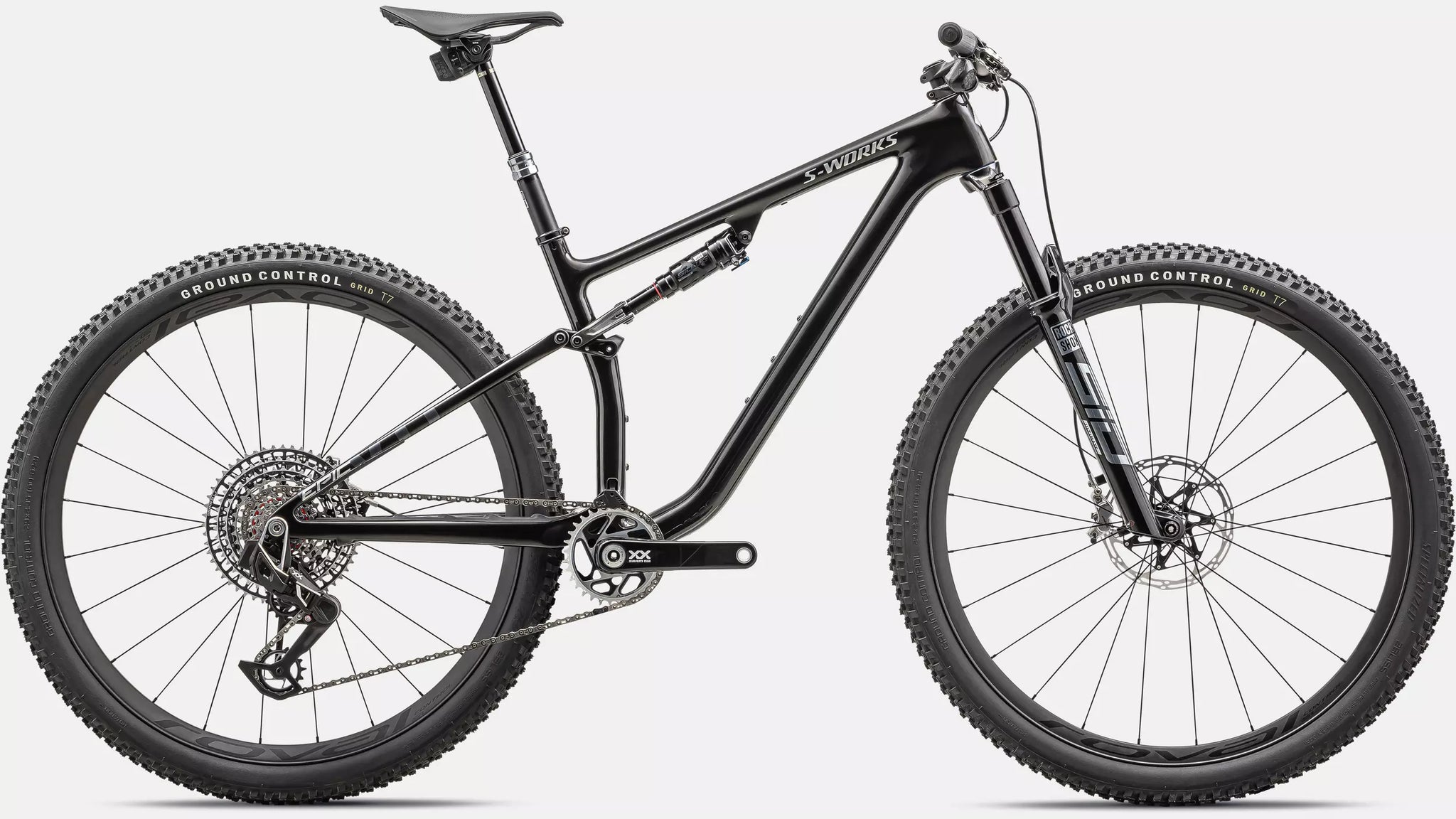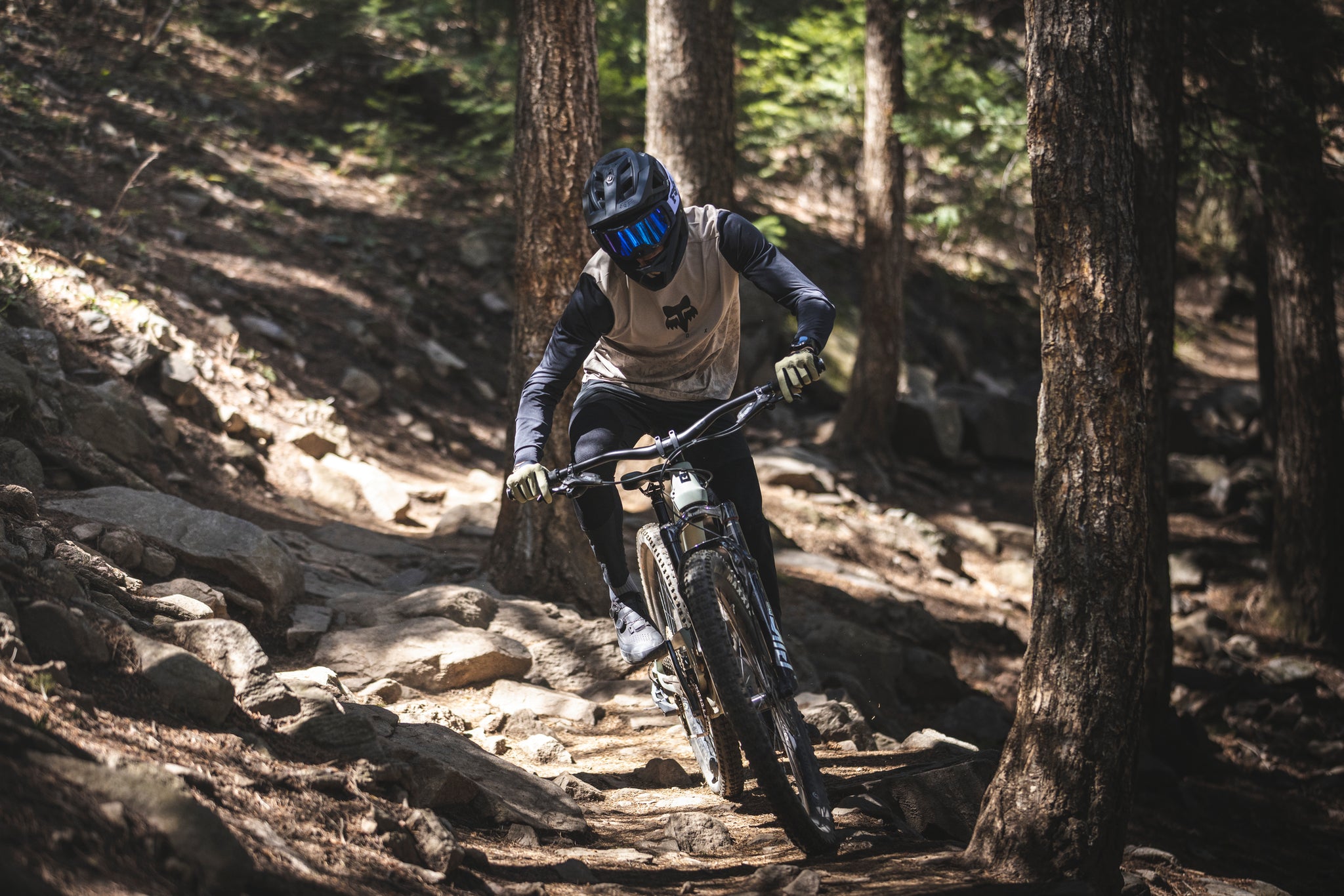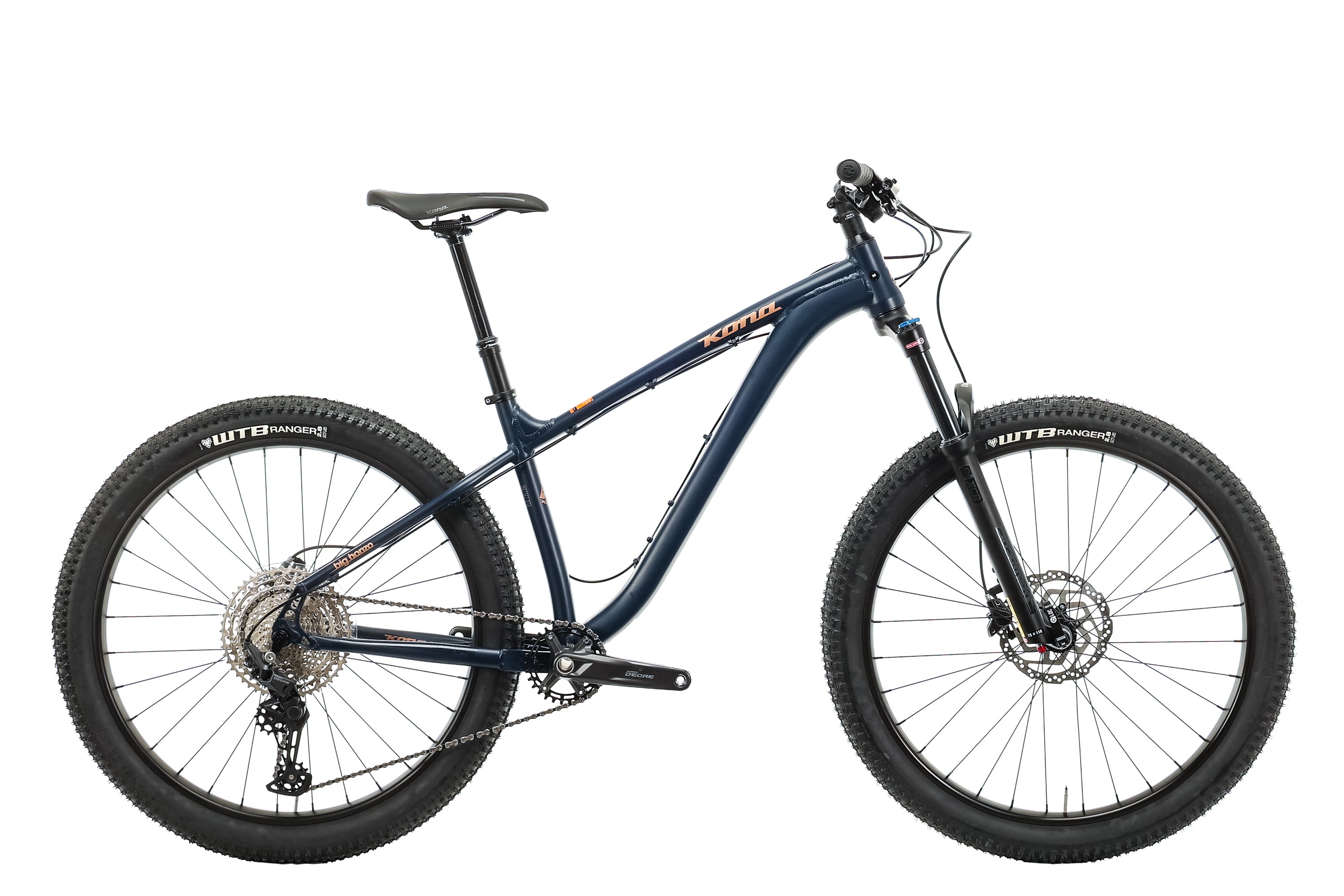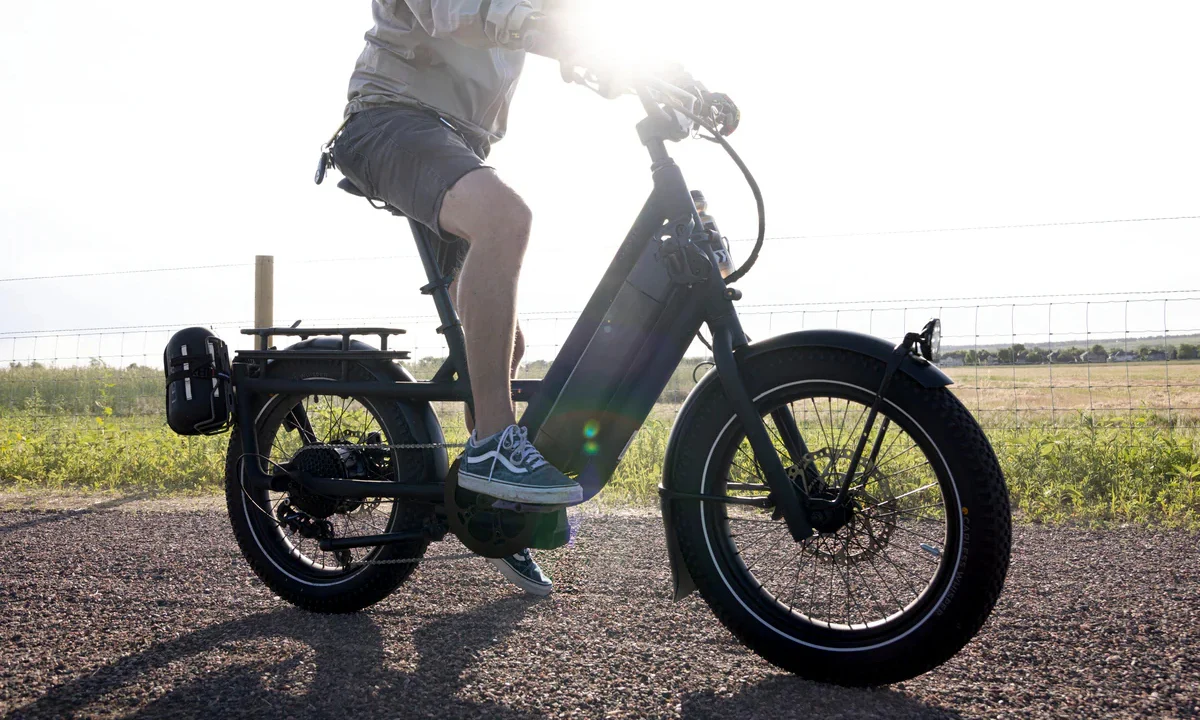Many newcomers to the sport often find themselves taken aback by the high prices associated with mountain bikes and gear. Mid-range mountain bikes often retail for thousands of dollars, with many premium models fetching five-figure sums. How can these bikes possibly be worth so much? Plenty of commentators have pointed out that you can buy a motorcycle for the same price as mid-range to high-end mountain bike, which seems ridiculous.
Fortunately, right now there are plenty of cheap AND good mountain bikes to be found, especially when shopping used. But if you go online to see what "hardcore" mountain bikers are riding it's easy to feel discouraged when their bikes all seem so expensive. Look at MTB journalism, and the bikes they tend to ride and review are often the same. Why do these $5,000+ and $10,000 bikes exist and who are they for?
The point of this post isn’t to justify the existence of $10,000+ bikes. We’re just going to try and explain a couple of the key reasons why these high priced mountain bikes are even a thing.
Pro-Level Bikes Are Available for “Normal” Riders
 Let’s take a look at an example of a super expensive but also super popular bike currently on the market: the Specialized S-Works Epic EVO LTD. This top-of-the-line version of the Epic EVO retails for a wallet-melting $11,000.
Let’s take a look at an example of a super expensive but also super popular bike currently on the market: the Specialized S-Works Epic EVO LTD. This top-of-the-line version of the Epic EVO retails for a wallet-melting $11,000.
What else could you get for $11,000? My 10-year-old used car cost around that when I bought it, but that’s not a great comparison. A better comparison might be the brand new Yamaha YZF-R7 I’ve been eyeing recently. It’s a very nice, very fast 689cc motorcycle that retails for “only” $9,199. What a deal!
 You can ride the EXACT bike that Chris Blevins and Matt Beers use. Photo: Michal Cerveny
You can ride the EXACT bike that Chris Blevins and Matt Beers use. Photo: Michal Cerveny
Here’s a big difference between a mountain bike and a motorcycle though. That $11,000 S-Works Epic EVO is essentially the exact same bike being ridden by Specialized's top World Cup XC mountain bike racers to win the biggest, most important bike races in the world. The frame is built using Specialized’s highest-grade S-Works FACT 12m carbon. The drivetrain is a top-of-the-line wireless electronic SRAM XX SL Transmission. The SRAM hydraulic disc brakes, RockShox suspension, and Roval carbon wheels are top-of-the-line as well.
If you buy a $10,000+ bike, you’re essentially getting the same thing that the best riders in the world get. Heck, if you drop a couple more thousand on upgrades, you could be riding something “better” than what the pros can ride due to sponsor obligations and UCI rules.
That Yamaha YZF-R7 I’m lusting over, however, is nowhere near what the best motorcycle racers in the world are riding. Some might even consider it a "beginner" bike.
 The Yamaha R7 vs. M1 — 139 mph vs 220+ mph, $9,000 vs. $3 million.
The Yamaha R7 vs. M1 — 139 mph vs 220+ mph, $9,000 vs. $3 million.
MotoGP bikes, which are the pinnacle of motorcycle racing, cost upwards of $3 million and can reach 220+ mph. If we look at something a bit more relatable, a homologation series like WorldSBK, those motorcycles are still much more expensive. To buy a road-ready homologation model, regular consumers might need to spend up to $40,000. The bike that WorldSBK racers are riding however might have upwards of $250,000 worth of racing components added to turn it into a competitive racing bike.
The performance and technology on pro-level motorcycles are far out of reach for regular riders. Not only is it prohibitively expensive, but you can’t just walk into a retailer and buy the same tech the top pro race teams use. With mountain bikes, however, any weekend warrior with a big enough wallet can get what the pros use or better.
But is a $10,000+ bike actually worth the money though? That’s debatable. Beyond a certain point (I usually say around $3,000+) the gains you get for your money start becoming very marginal, which leads me to the next point…
Chasing Perfection Costs A Lot of Money
 Some riders pay big bucks to shave a few seconds or grams.
Some riders pay big bucks to shave a few seconds or grams.
What's the biggest difference between a $1,000 mountain bike and a $10,000 mountain bike? $9,000!
Seriously though, when looking at mountain bikes, it can be hard to understand where all that extra money goes. A $1,000 mountain bike can pedal. It can shift gears. It might even have suspension that squishes. It’s probably even fun to ride.
Mountain biking is a sport that’s very heavily reliant on equipment. As with any such sport, diehard enthusiasts are more than willing to fall down the rabbit hole of optimizing their gear to improve their experience or achieve marginally better results. Here are examples of the things mountain bike geeks like:
- A bike that climbs well
- A bike that descends well
- A bike that corners well
- A bike that is durable
- A bike that doesn’t weigh too much
- A bike that inspires confidence
- A bike that is a pleasure to ride
- A bike that looks good
To an extent, a $1,000 mountain bike can be all of those things. But as mountain biking has developed, the tastes of "hardcore" riders has become more refined and they begin to seek ways to take one or more of the above traits to the extreme. Manufacturers take advantage of this by selling products that are marginally better in one quality or another. Of course, getting these marginal gains comes at a cost.
These days, mountain bikers can buy carbon fiber frames that are designed by engineers and handmade by skilled workers in custom molds to achieve the ideal geometry, weight, and stiffness. These add cost.
We have lightweight wireless electronic drivetrains that provide precise shifts under the worst conditions and enough gears to scale the steepest inclines while being tough enough to survive serious crashes and abuse. These add cost.
We have suspension with enough damper adjustments to custom tune forks and shocks to suit any terrain or rider, all in a package that weighs a fraction of a motorcycle's suspension. These add cost.
The biggest thing we’re paying for with more expensive mountain bikes is refinement. So is a $10,000 bike better than a $1,000 bike? Yes. is it 10x better though? Definitely not.
 $10,000+ for a 21 pound bike. For some it's worth it.
$10,000+ for a 21 pound bike. For some it's worth it.
To explore how refinement balloons cost, let’s just look at something like weight, since that’s an easily quantifiable thing that we can all understand (we can all pick up a bike and judge if it’s heavy or light).
While I always stress that bike weight isn’t everything, bikes still need to be light enough for the average person to pedal it up a trail. Compared to even the cheapest motors, we humans are weak. The most powerful cyclists barely generate enough watts to power a toaster. With such pitiful engines, weight plays a huge role in how we perceive our bikes.
An entry-level $1,000 XC bike might weigh 30-35 pounds. This is enough for most riders to get around. But shaving 5 pounds off will make a bike feel more nimble and fast. 10 pounds even more so.
Top-of-the-line full-suspension XC bikes often get into the low 20 pound range. Carbon hardtails can even be under 20 pounds. To a mountain bike geek, that’s something desirable. The problem is, as we try to reduce weight more, costs go up. Worst of all, the cost of making things lighter doesn’t scale linearly.
I like to use the “tyranny of the rocket" equation as an analogy. Weight is one of the biggest considerations when shooting a rocket into space. More weight requires more rocket fuel, but the amount of fuel needed increases exponentially compared to weight. For example, increasing a rocket's payload by only 5% could require a massive 130% increase in fuel to move it.
It’s a similar situation with reducing the weight of bikes, but instead of fuel, it’s money that gets burned up exponentially. When you start reaching the high end of the XC bike market, you’ll end up spending thousands of dollars to shed a few hundred grams.
Ultimately, crazy expensive mountain bikes are the result of riders and manufacturers constantly chasing perfection. It doesn't mean it's "worth it," but there are people who will buy it.
Final Thoughts: MTB Can Be “Cheap”

Capable aluminum hardtails like the Kona Honzo can be had for under $2,000 and are the perfect affordable mountain bike.
Have we covered every factor of why mountain bikes are so expensive? Not even close. But the two factors explained here are the big ones I note when trying to explain the existence of super expensive mountain bikes to family, friends, and customers.
Ultimately, perhaps the biggest reason absurd $10,000 bikes exist is there are people willing to buy them. As long as bike companies can sell them, crazy expensive bikes will exist. Fortunately, you don’t have to pay anywhere near that much to get started on your own MTB journey, especially with many bike prices coming down after the pandemic bike boom.
Most $1,000-2,000 “beginner” mountain bikes are solid enough to take on dedicated mountain bike trails where you’ll have to contend with rocks, roots, drops, and maybe even jumps. (If you’re just riding to get around town or on gravel paths then a “real” mountain bike might not be what you need. Cheaper bikes are often fine for this.)
If you’re the type who’s unsure if mountain biking is the sport for you, then going somewhere where you can rent a bike or attend a bike demo might be the best way to get your feet wet without spending too much money.
As general advice, I tell prospective mountain bike riders to avoid “big box” or department store bikes (e.g. Walmart bikes) if they want to ride on “real” dedicated mountain bike trails. However, if department stores are the best pathway for you to enter the sport, then the safest bet is to stick with bikes made by established and trusted MTB brands — Cannondale and Salsa at REI, Intense 951 at Costco, and Giant and GT at Dicks.
These brands have all been in the mountain bike game for a long time, make affordable entry-level models, and build bikes with decent frames and components that should help you survive your early mountain bike years.
Ideally though, I suggest most new mountain bikers buy used, because you can often get a better bike for the same price as buying a brand new entry-level bike. The main thing to keep in mind if you’re buying used though is that most older (10+ years) used mountain bikes tend to be more trouble than they’re worth unless they’re in great condition, or you’re a decent mechanic with a good amount of bike knowledge.
No matter what sort of bike you choose to ride though, the most important thing is to stay safe and have fun. Wear a good helmet, ride within your abilities, and get outside and enjoy nature.
























